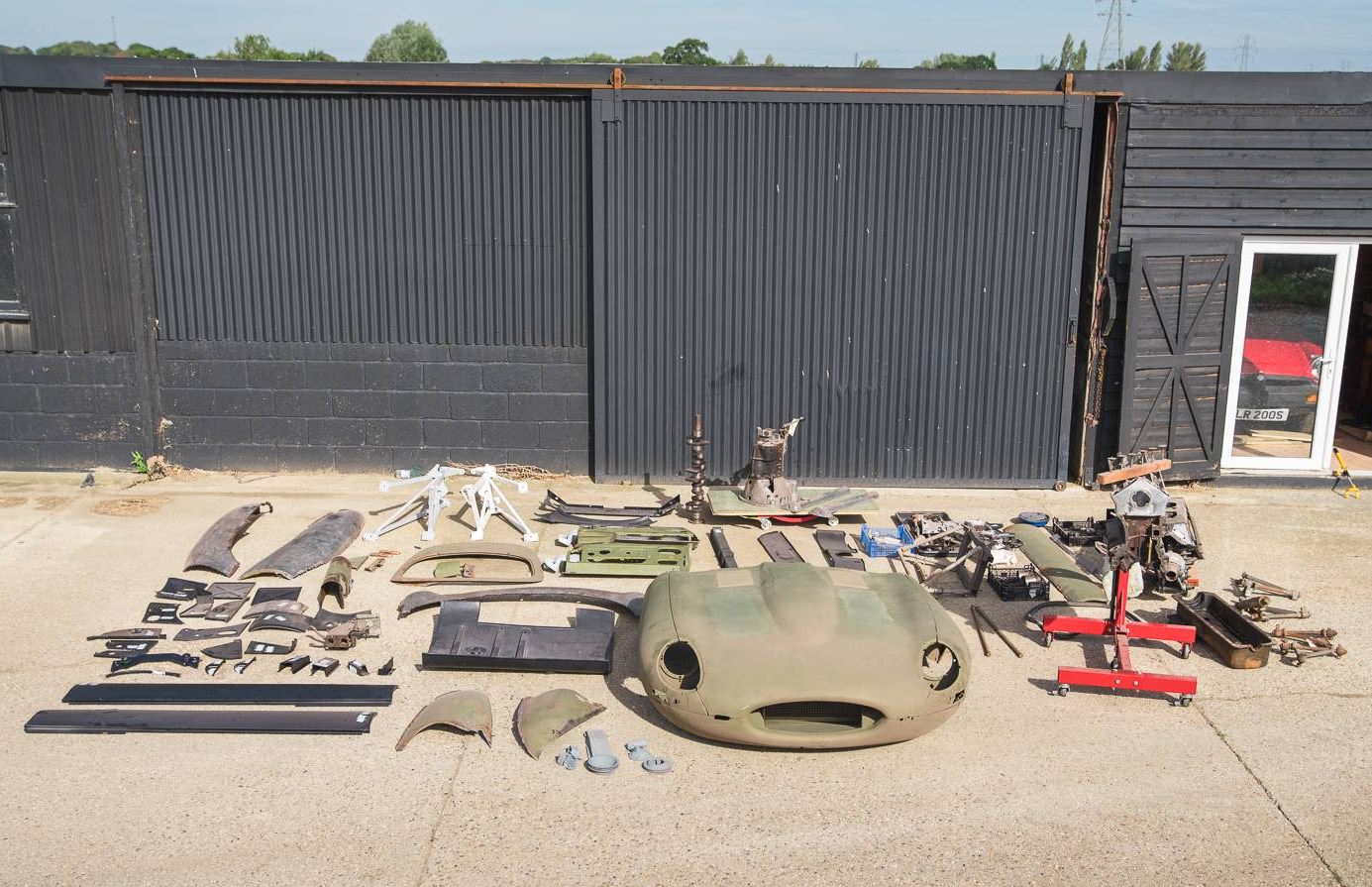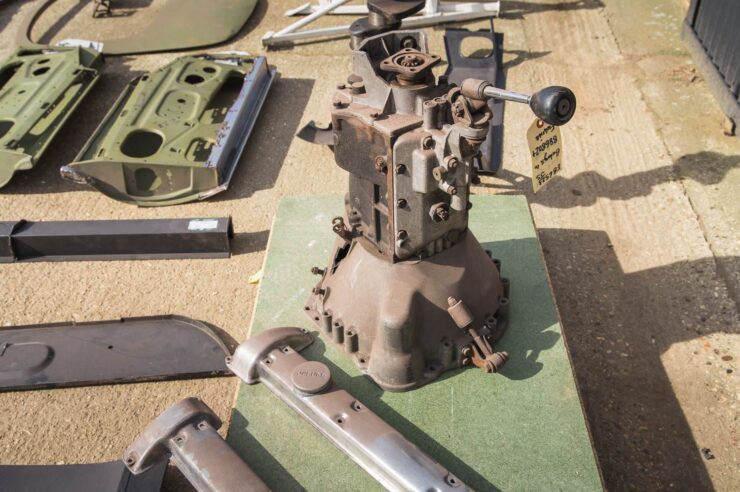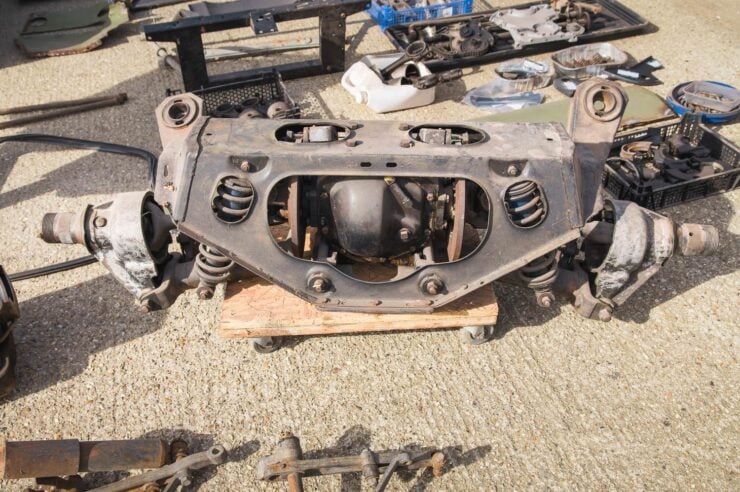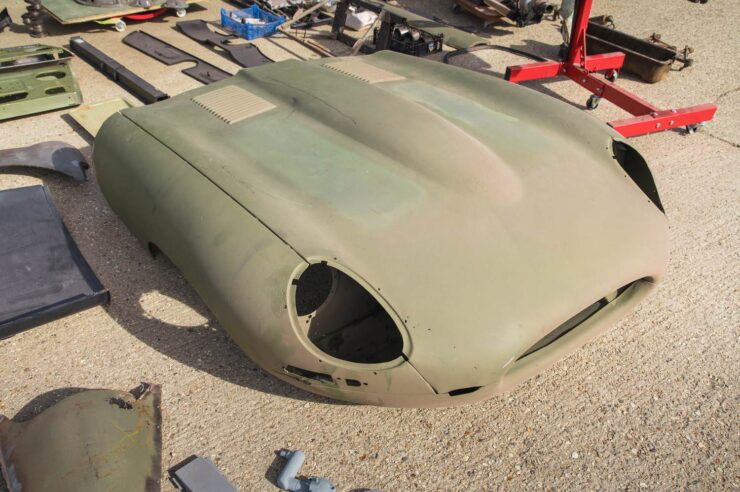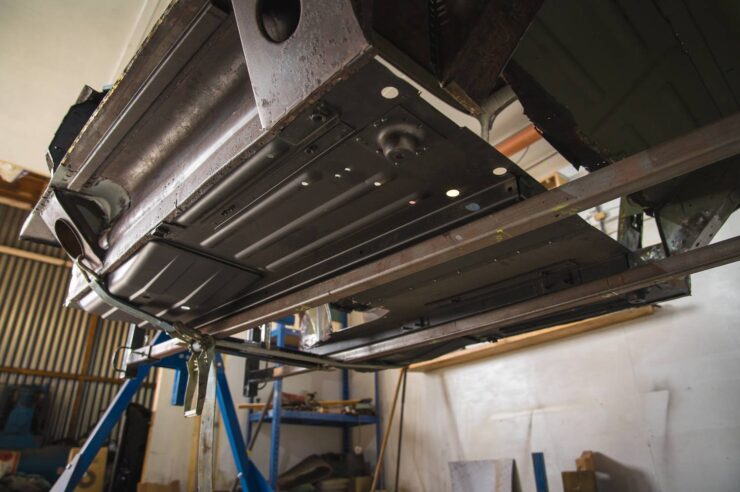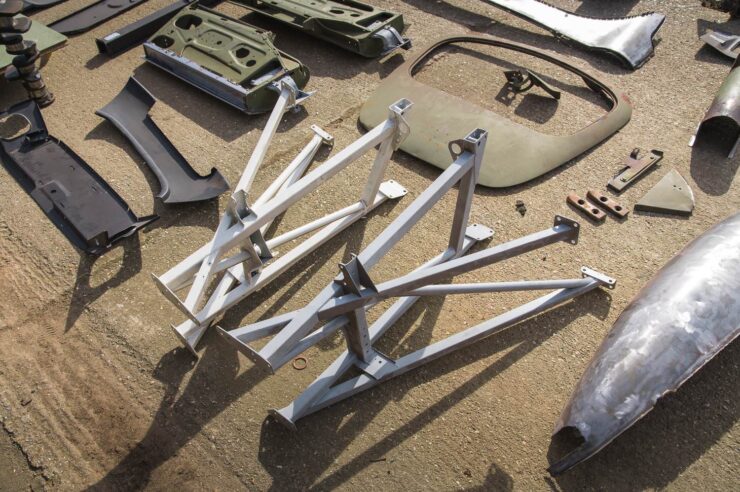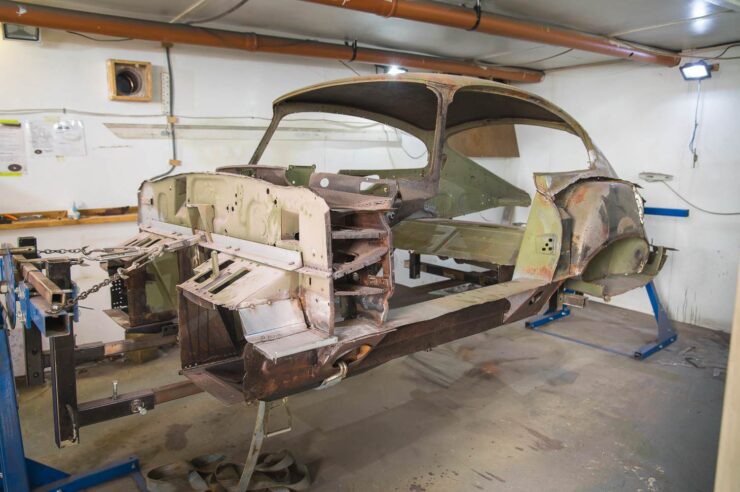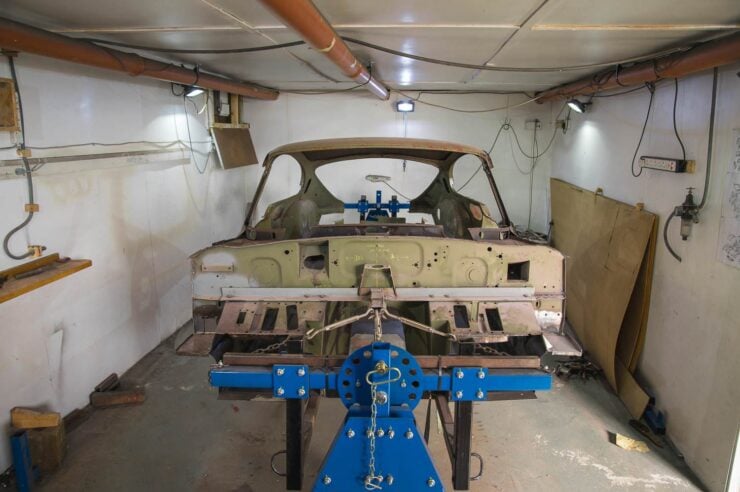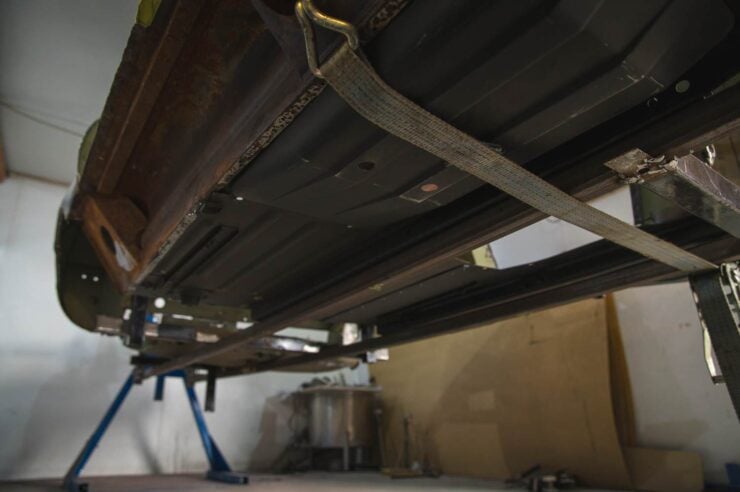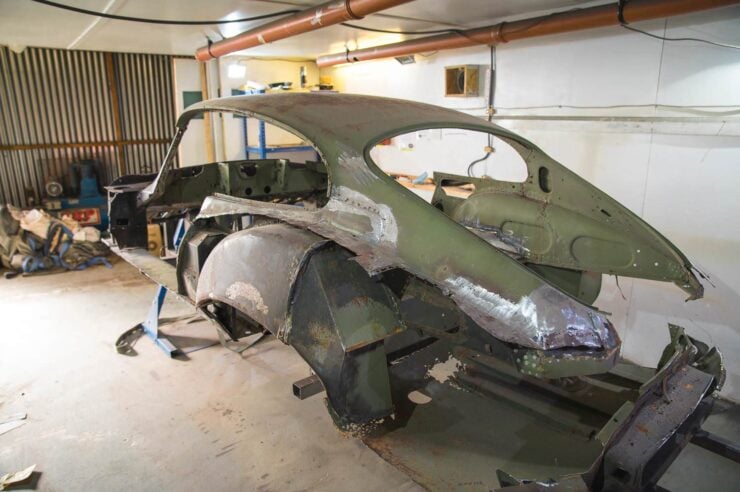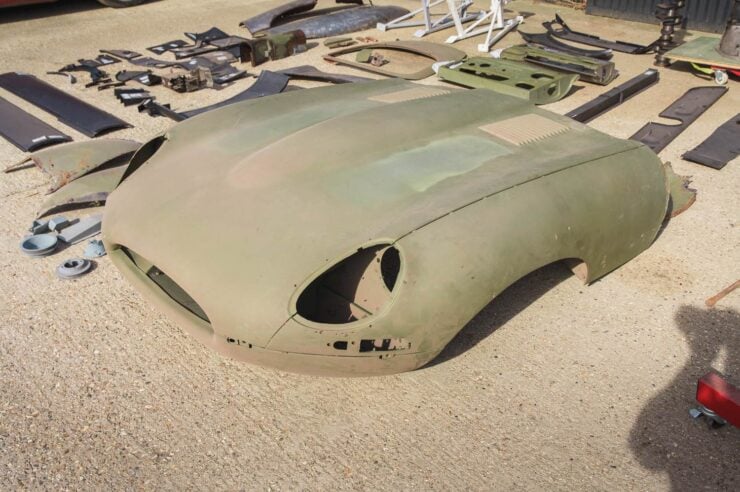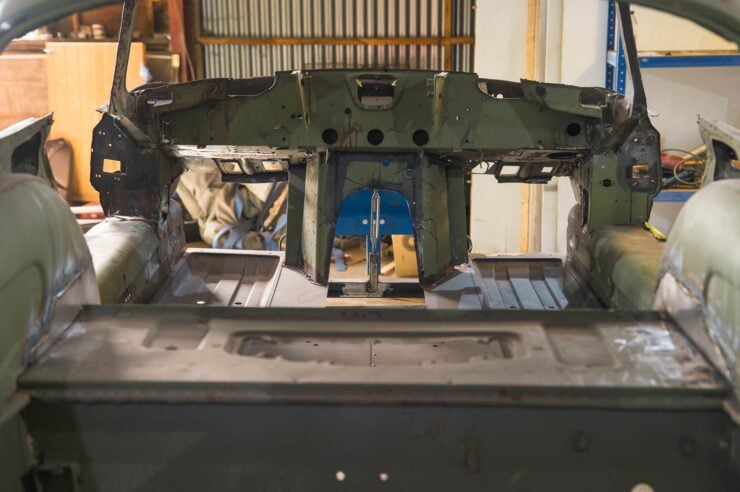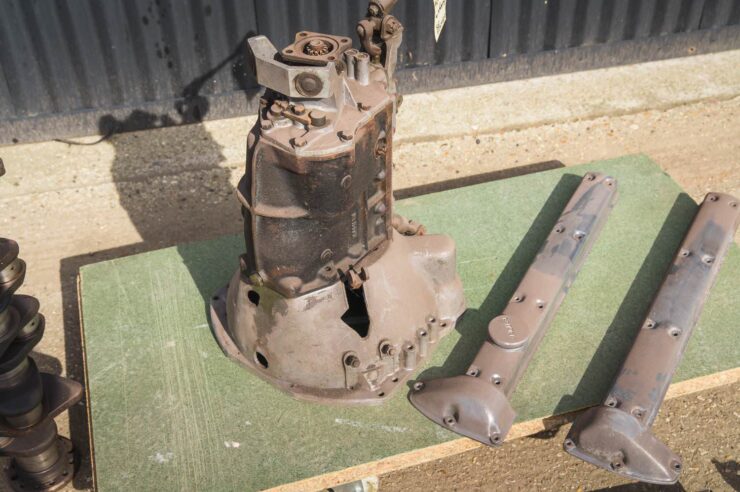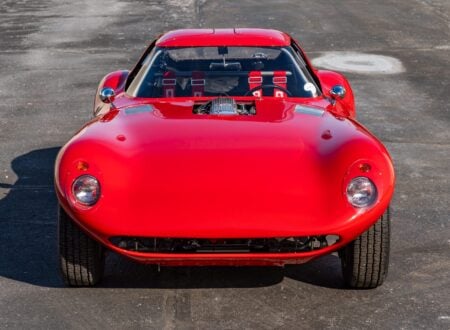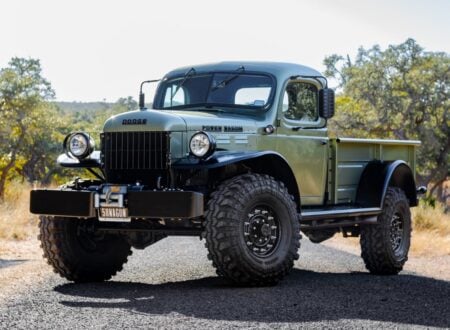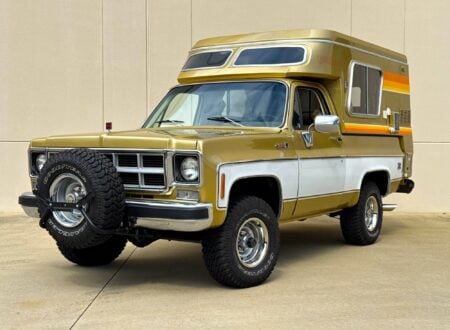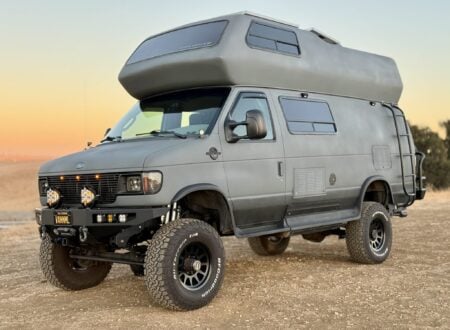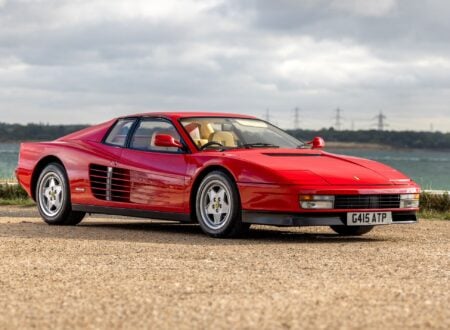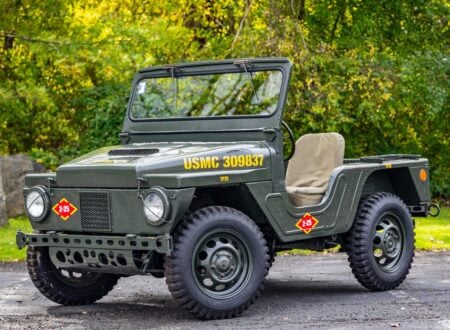This is a Jaguar E-Type project car, more specifically it’s an early fixed-head coupe model from 1962 – just the second year of production. It’s already been fully disassembled and the main unibody is fitted to a rotisserie which is included in the sale.
When it comes to classic cars there are few more universally loved than the E-Type, also known as the XKE in North America. When it was introduced in 1961 it cost just over £2,000, or approximately £37,109 in the 2023 equivalent, meaning buyers were getting a lot of bang for their buck. Or stirling in this case.
Fast Facts – The Jaguar E-Type
- The E-Type’s design and engineering roots can be traced back to the Jaguar D-Type race cars of the 1950s which achieved three wins at the 24 Hours of Le Mans. The D-Type heavily influenced the subsequent development of the E-Type. Aerodynamicist Malcolm Sayer, engineer William Heynes, and Jaguar co-founder William Lyons collaborated on the project, creating one of the most memorable sports cars of the 20th century.
- Launched at the 1961 Geneva Motor Show, the E-Type instantly stole the limelight. Its blend of aesthetics and performance, coupled with a comparatively reasonable price, made it an instant sensation. The vehicle’s last minute overnight drive from Coventry to Geneva by test driver Norman Dewis, arriving just in time for the show, added to the legend around the car’s introduction.
- Powered initially by a 3.8 liter straight-six derived from the XK150S, the E-Type was capable of 265 bhp. It could do the 0-60 mph dash in approximately 7.0 seconds. Its unmistakable design, characterized by a long hood, sleek lines, and a distinctive rear end, was loved by many, including Enzo Ferrari, who famously called it “the most beautiful car ever made.”
- The car you see in this article is a 1962 E-Type that has been disassembled for a restoration. The restoration has stalled, and it’s now being offered for sale in the hopes that someone will finish the job and get it back on the road.
“The Most Beautiful Car In The World”
Plaudits for the design and engineering of the Jaguar E-Type have been pouring in since very shortly after it was introduced on the Jaguar display stand at the 1961 Geneva Motor Show. Few show-goers knew that the car had only just made it in time, having been finished and then driven across Europe from England for 17 hours at high-speed the night before by famed Jaguar test driver Norman Dewis.
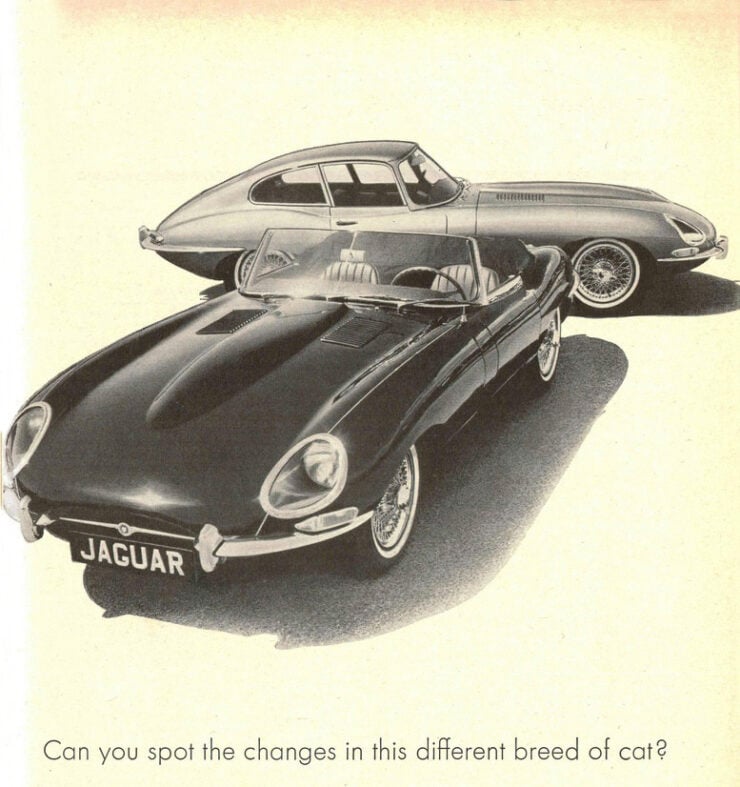 There can be no denying that the E-Type is a stunningly beautiful car, both in convertible and coupe forms. Image courtesy of Jaguar Cars Ltd.
There can be no denying that the E-Type is a stunningly beautiful car, both in convertible and coupe forms. Image courtesy of Jaguar Cars Ltd.Fortunately for Norman, the E-Type had been engineered from the ground-up specifically to be one of the most advanced sports cars on sale at the time of its release. It was largely based on the lessons learned in the development of the three-time 24 Hours of Le Mans winning Jaguar D-Type of the 1950s.
The development of the E-Type was largely the responsibility of three men, Aerodynamicist Malcolm Sayer, engineer William Heynes, and Jaguar co-founder William Lyons.
They developed a monocoque unibody central shell onto which a front subframe was bolted which held the engine as well as the front suspension and brakes. Unusually for the era, the E-Type also had independent rear suspension rather than a live axle and rear disc brakes rather than drums.
Power was provided by the Jaguar XK straight-six, undeniably the most important Jaguar engine ever made and the same fundamental design that won the 24 Hours of Le Mans for the British automaker four times in the 1950s.
It’s remarkable to think that you could buy a relatively affordable new sports car powered by an engine with four outright Le Mans victories under its belt, not something that could ever happen today.
The body of the car was largely designed by Malcolm Sayer who had worked for the Bristol Aeroplane Company as an aerodynamicist during the Second World War.
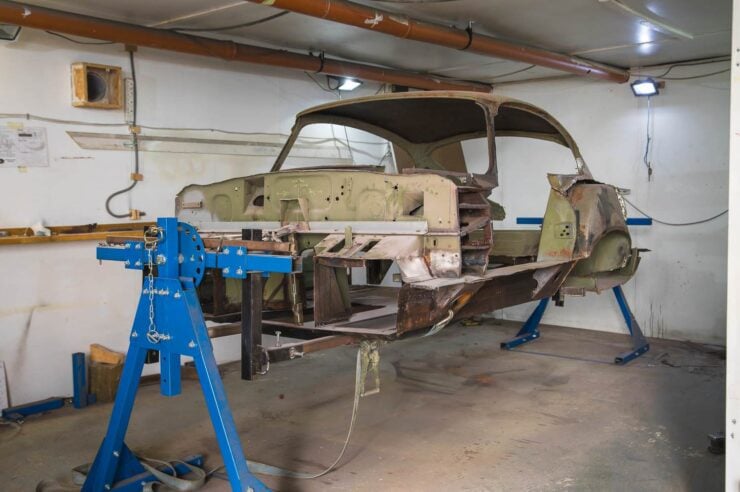 The central unibody of the car is currently fitted to a rotisserie which is included in the sale. This allows the car to be rotated 360º for easy access to any area you need to work on.
The central unibody of the car is currently fitted to a rotisserie which is included in the sale. This allows the car to be rotated 360º for easy access to any area you need to work on.After the war, Sayer was hired by Jaguar in 1951, and he had a hand in bringing aircraft aerodynamics into the world of automotive design with the Jaguar C-Type, D-Type, E-Type, and the later Jaguar XJ13 racing prototype.
Sayer’s design of the E-Type was overwhelmingly influenced by aerodynamics rather than any specific aesthetic goal, despite this (or perhaps because of it) the car has become widely recognized as one of the most beautiful of all time.
The Jaguar E-Type would be produced over three primary series between 1961 and 1974, most considering the earlier Series 1 cars to be the most desirable, and their prices reflect this.
The E-Type Project Car Shown Here
The car you see here is a 1961 Jaguar E-Type FHC, or fixed-head coupe, using the Jaguar parlance of the time to denote a hardtop coupe. The car has been almost entirely disassembled and it appears as though a restoration has begun, but then stalled.
The main unibody section of the car is now fitted to a rotisserie for easy access, and this rotisserie is included in the sale along with a number of other tools that are likely to be needed during the rebuild. The car comes with a 3.8 liter block and 4-speed transmission, as well as most of the major parts.
There are a few notable parts missing, including the interior, and it would be advisable for any prospective buyer to examine the parts in person before buying to create a detailed stocktake of what is present and what is missing.
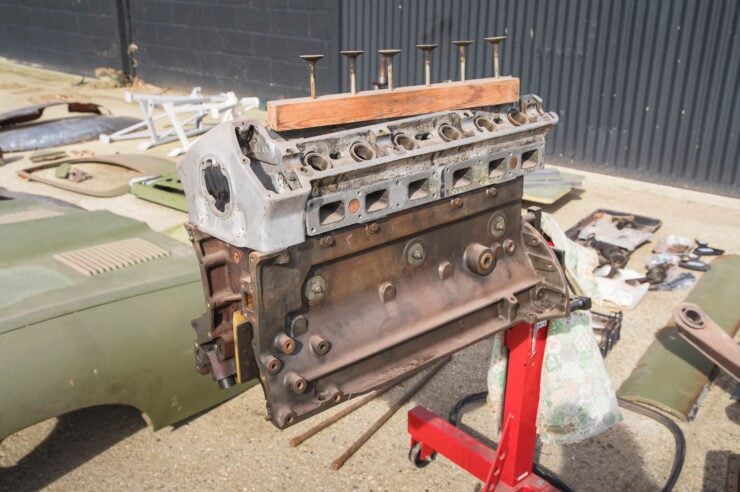 Importantly, the car does come with the engine block and most of the engine, as well as the transmission and differential – all very expensive to buy separately otherwise.
Importantly, the car does come with the engine block and most of the engine, as well as the transmission and differential – all very expensive to buy separately otherwise.It’s clear after looking over the images that there’s plenty of work to do here, and it won’t just be a straight forward assembly. Some areas of rust damage persist that will need repair, patching, or replacement. The buyer will also need to have the engine, transmission, and differential rebuilt – or do it themselves of course.
The car is now being offered for sale as-is, where-is on The Market by Bonhams. It’s being sold with no reserve and a price guide of £10,000 – £15,000 or approximately $12,120 – $18,180 USD. If you’d like to read more about it or place a bid you can visit the listing here.
Images courtesy of The Market by Bonhams

